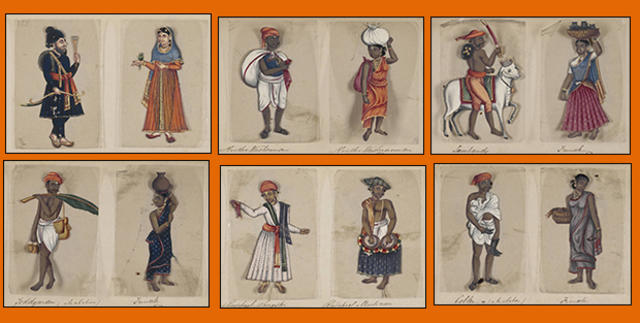- Visitor:21
- Published on:
Ritual and Meaning in the Vedas
This is an excerpt from the Prologue of ‘Veda Mimansa – I’ by Shri Anirvan. This article talks about one of the most fundamental misconceptions about the Vedas; that the Vedic mantras have no meaning and are completely divorced from the Upanishadic philosophy. In this brief piece, Shri Anirvan clears all misconceptions about the problem.

Man has a tendency to exaggerate; whatever his mind takes hold of at any given time, he embraces it so completely that everything else is belittled. We find an instance of this in the attitude of the ritualist towards the Mantra: the Mantra is to be applied (Viniyoga) to rites, therefore it is not necessary to comprehend the meaning of the Mantra while applying it.

Consequently, over times, a theory developed that the Vedic hymns have no meanings at all. We find the earliest example of this view in the Nirukta. Yaska after quoting Kautsa’s viewpoint attempted to counter this. It is to be noted, that when Kautsa asserted that the Vedic hymns are without meaning (Anarthaka), he does not really mean that they are incomprehensible. The crux of Kautsa’s viewpoint is similar to that of the ritualist. What he really meant was that since the actual purpose of Mantras was their application in rituals, there was no need of giving unnecessary thought to their meaning.
There are, of course, Vedic hymns that are difficult to comprehend from the language-viewpoint, but they are only a few in number. Even Kautsa himself would not have been able to give many examples of such Mantras. Of course, from the liturgical point of view his arguments have great validity. If incantations are taken to embody the cosmic breath, then by the means of that breath alone, human consciousness can be made to attain elevation. In this, an awareness of meaning-specificity is not required. This is one of the fundamental tenets of Sabdabrahmavada. But from this, the theory that the exaggerating tendency of human mind finally formulated, later became rather an obstacle to inquiry on the meanings of the Veda.
Thus, on the one hand the ritualist school in their obsessions with the minute details of ceremonies and the correctness of application-procedures did not try to go deep into the Vedic Mantras, the advocates of the path of knowledge on the other remained indifferent to the Mantra-portion considering it to be the special preserve of the ritualist. Because of the creation of this unnatural rift between the doctrines of action and of knowledge, the Veda-Mantra has apparently remained uncared-for from the viewpoint of deliberations on its import or from any analysis of its mystic meaning.
In fact, in the Mantra-portion of the Veda, this feud between the ritual and knowledge cannot be discerned. That all the Mantras had been composed with the objective of application in the rituals is not true. The number of Suktas specifically composed for the purpose of ritual is actually very small. For most of the Suktas, ritual is only an occasion, not the objective. The number of such hymns that do not refer to rituals at all but only express the yearnings of the soul is not very meagre either. Merely from the collection of hymns (Veda-Mantras), it is impossible to discover the blueprint of the excessive ritualism that we encounter in the Brahmanas.
Around the rites, it is the fervor that really emerges as the predominant expression even in the Yajur Samhita, where the Mantras relating to sacrifices have been specially compiled. If we keep in mind that the objective of the Vedic seers was to elevate the consciousness to a transcendental plane, then irrespective of the mode of practice (Sadhana) that might have been adopted, it would be the feeling of rapture that would naturally come uppermost submerging the ritual. If a man’s commitment to the ultimate goal of spiritual quest is very intense, then it is only natural that the externality of praxis would gradually tend to become simpler and less ceremonial.
There is no need to emphasize that the complex ritualistic procedures that are described in Brahmanas were not meant for the commoners’ observance. It is not unreasonable to surmise that there had definitely been an original and simpler from of these complex rituals and that these were prevalent among common people.

Don’t we find the same thing in modern times as well? Just as now-a-days in our country, ostentatious community-worship of deities on special occasions takes place, but along with this, the simple worshipping of devout hearts in the secluded corners of their houses too continues. That the Tantra provides for both ceremonial worship (Vahya Puja) as well as mental worship (Manasa Puja) is an indication that a natural harmony exists between ceremony and feelings. Any ritual that does not have a powerful resonance of fervor behind it, cannot last long or can satisfy the inner longing of a man. It is very likely that the ritual procedures we find mentioned in the Vedic Mantras did have both internal and external dimensions.
The soma sacrifice can be cited as an example. Somayaga has been frequently referred to in the Rgveda; an entire book (Mandala) comprises a collection only of hymns to soma. The description of the Soma sacrifice in the Brahmanas shows that the Somayaga was not only the highest of the sacrifices, but its performance was also very complex and expensive. It was not possible for everyone to perform the ritual of Soma sacrifice. At the same time, it may also be said that the Soma sacrifice represented the culmination of Vedic ritual praxis (Karmasadhana); it bestowed the attainment of immortality, the elevation of life to the resplendent plane, the union with the universal god. Can it be maintained that this goal of immortality was set only for a handful of patrons (Yajamana) of this expensive sacrifice?
Even today, do we believe that those who can afford the ceremonies worshipping of the goddess Durga alone achieve merger with the Great Mother embodying the primordial Energy (Mahasakti)? So it seems reasonable that the Somayaga had a complex ritual form (Karmarupa) as well as a simple knowledge-based (Jnanarupa). That such was the case is revealed by a Vedic reference itself. The Veda says that those who pound the Soma-herbs, imagine that this way they can consume the extract of Soma; but, the essence of Soma that is unveiled to those that know the Brahman cannot be consumed by just anybody.
The Soma that they of vast consciousness know, is not partaken by any one. Keeping in mind this explicit indication, if we study and examine deeply the account and application of the concept of Agni-Soma in the later Tantra and Yoga practice, not a trace of doubt would linger in our mind as regard this truth that the Soma sacrifice had a mystical aspect about it as well.
Introduction of the Author – Shri Anirvan
Shri Anirvan was a Sadhak, and a Vedic scholar and philosopher. He was widely known as a great scholar who commented upon the Vedas and other scriptures and spiritual traditions of India. He wrote the three volume treatise Veda Mimamsa. He was also the guru and mentor of Shri Ram Swarup, who along with Sita Ram Goel founded Voice of India Publications, widely believed to be the intellectual backbone of the Hindu Renaissance in 20st century.
- 10 min read
- 0
- 0










